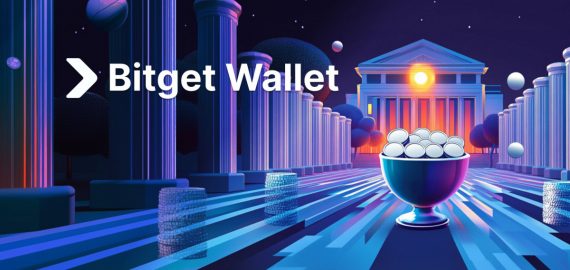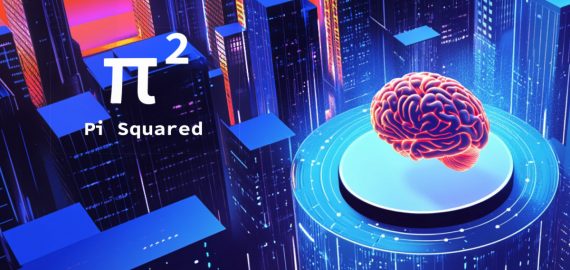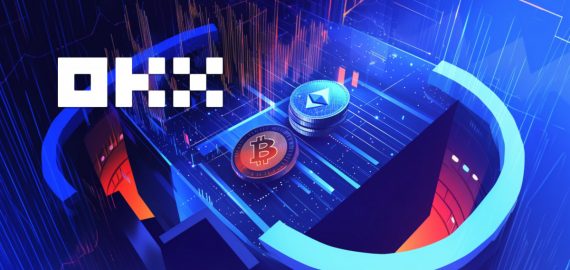The New Frontier Where AI Meets DeFi and Real-World Assets


In Brief
GAIB, a platform bridging AI and DeFi, transforms GPU infrastructure into tokenized, yield-generating financial products, aiming to unlock access, liquidity, and yield in the AI-powered future.

As AI continues to reshape the global economy, one of the most critical resources, compute, is becoming both scarce and financially underutilized. Enter GAIB, a pioneering platform bridging AI and DeFi by transforming GPU infrastructure into tokenized, yield-generating financial products. At the forefront of this movement is Kony, CEO and Co-founder of GAIB, who shares how his team is building the economic rails for the AI-powered future, unlocking access, liquidity, and yield in a sector that’s rapidly defining the next decade.
What is GAIB, and what role does it play in the AI and compute markets? How does the platform function, and why is your work particularly important right now?
GAIB is the economic layer for AI and compute, aiming to bring the AI infra economy onchain. Capital markets are currently bottlenecked due to high compute demand. In order to solve this, we’re building the financial rails to scale the AI economy.
We tokenize GPUs and their yields, transforming them into onchain, yield-bearing assets. This opens up funds for data centers, allowing them to scale as demand increases. At the same time, it provides direct access to the growing AI economy to both retail and institutional investors. By turning compute into an RWA, anyone can own and benefit from the AI economy.
How do you envision the future of compute and compute assets within financial systems? In what ways is GAIB transforming compute into tradable financial products?
Compute is the newest asset class. As AI continues to grow and becomes a part of daily life, compute demand will also increase. Financializing this demand is inevitable.
Just as oil powered the industrial age, compute powers the AI economy. However, unlike other commodities, compute is illiquid, undervalued, and gatekept. For it to be accessible, it needs to be tokenized. This is where GAIB comes in. We turn compute assets into a tokenized, tradable, and yield-bearing asset. In doing so, we give users direct access to the AI economy.
At the core of this system is AID, GAIB’s synthetic dollar backed by real GPU cash flows. With AID, compute assets become liquid, spendable, and yield-generating. It makes compute a true financial primitive for the AI-powered future.
What are the main challenges in financializing compute, and how is GAIB actively addressing them?
The biggest challenges in financializing compute are ensuring trust and transparency in the underlying assets and creating standardized, scalable deal structures.
To increase trust and transparency, we work directly with cloud providers and data centers, in addition to implementing independent third-party audits. On the deal structure side of things, we collateralize deal terms and build risk models tailored for GPU-backed cash flows. GAIB also has a node network that allows for the continuous monitoring of the underlying GPUs onchain. After all of this, we ensure that everything is tokenized and immutably presented onchain.
How does GAIB tokenize real-world compute assets and convert them into on-chain yield-bearing instruments?
GAIB finances GPU infrastructure through structured deals with cloud providers and data centers. These deals are collateralized by high-demand enterprise-grade GPUs like H200s, GB200s, and more. The cash flows from the agreements are bundled and brought onchain.
GAIB introduced AID, a synthetic dollar backed by this AI-generated yield. Users can deposit stablecoins, receive AID, and deploy it across DeFi. The result is a yield-bearing, spendable asset tied directly to real AI infrastructure and yield.
If compute is “the new currency,” what does that mean in practical terms for both everyday users and institutions?
It means access to AI will be as fundamental as access to money. For everyday users, this translates to the ability to use stablecoins or synthetic dollars like AID in interactions with AI agents, tools, and services. It also opens up the AI economy for users to earn real yield by holding assets backed by AI infrastructure like GPUs.
For institutions, compute becomes a new financial primitive: a yield-generating asset class that can be held, traded, or used as collateral. Instead of indirect exposure through stocks, capital can now flow directly into the infrastructure powering AI. GAIB is powering this shift by turning compute assets into liquid, onchain financial products.
How would you assess the current state of the AI and compute infrastructure sector?
We’re still very early. As of right now, there’s massive capital flowing into AI, and this is not likely to subside anytime soon. By 2030, it’s projected that there will be nearly $7T invested in AI data centers.
As AI demand surges, mid-market compute supply is falling behind. Hyperscalers sit at the top, while regional GPU providers lack capital. This gap is where GAIB operates. We’re bringing a fragmented, offline market onchain, and turning it into an opportunity.
What key trends or shifts do you anticipate will shape the sector’s evolution over the next few years?
AI-native financial systems will be the next big thing. Autonomous agents will soon manage capital, pay for compute, and earn yield without the need for human input. As more regional cloud providers emerge, crypto will be their funding source. Capital will move directly into infrastructure, rather than flowing through equities.
How do you see GAIB contributing to the evolving AI ecosystem and the broader chip infrastructure landscape?
By giving cloud providers access to flexible capital, GAIB helps them scale their infrastructure at an accelerated pace. We’re focused on the mid-size layer, which is currently being overlooked. This mid-layer is critical, and funding it ensures that the AI economy is not concentrated in the hands of a few large companies as the industry progresses.
What kind of future is GAIB aiming to create by combining AI, DeFi, and RWAs?
We are creating a permissionless AI economy. We want anyone, anywhere, to be able to fund infrastructure, earn real yield, and participate in the upside of AI without gatekeepers. By decentralizing the financial layer for the AI economy, we’re making this happen.
From your perspective, what are the biggest challenges and opportunities currently facing this convergence?
The hardest part is connecting two very different worlds. On one side, we have the physical infrastructure, which involves GPUs, data centers, and real contracts. On the other side, we have crypto, which is fast, liquid, and trustless. Turning real-world compute assets into something onchain and usable takes work. It means building standards, managing risk, and making it all transparent.
However, the upside is huge. AI needs capital, and crypto has it. By tokenizing compute, we can unlock a new market and build a new economy where anyone can fund real infrastructure and earn from AI’s growth. This is our mission at GAIB – bringing the AI infra economy onchain.
Disclaimer
In line with the Trust Project guidelines, please note that the information provided on this page is not intended to be and should not be interpreted as legal, tax, investment, financial, or any other form of advice. It is important to only invest what you can afford to lose and to seek independent financial advice if you have any doubts. For further information, we suggest referring to the terms and conditions as well as the help and support pages provided by the issuer or advertiser. MetaversePost is committed to accurate, unbiased reporting, but market conditions are subject to change without notice.
About The Author
Victoria is a writer on a variety of technology topics including Web3.0, AI and cryptocurrencies. Her extensive experience allows her to write insightful articles for the wider audience.
More articles

Victoria is a writer on a variety of technology topics including Web3.0, AI and cryptocurrencies. Her extensive experience allows her to write insightful articles for the wider audience.

















































